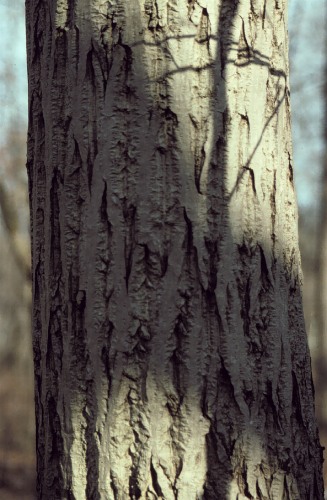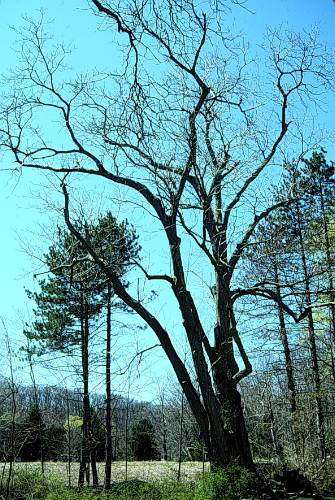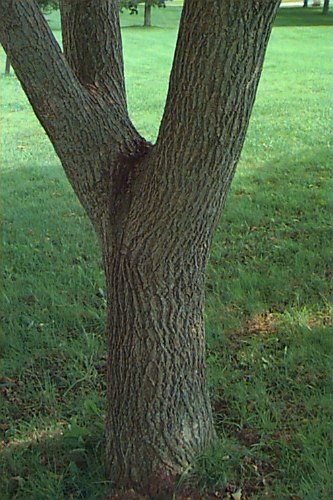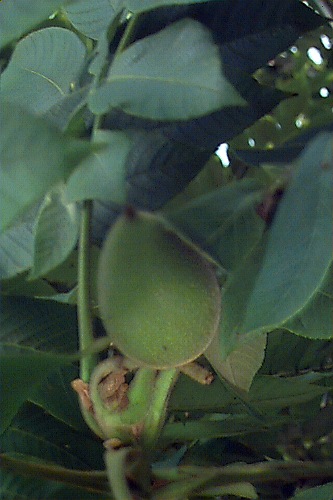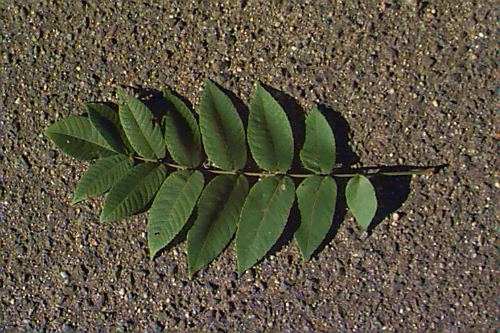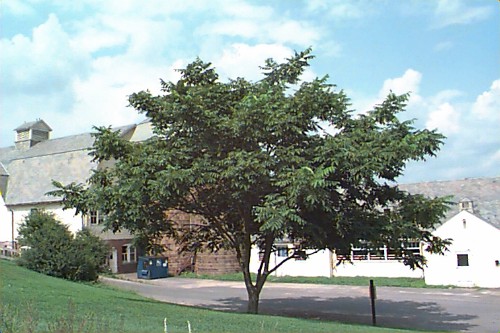Juglans cinerea
Butternut
Juglandaceae
ExpandHabitat
- native to eastern half of United States
- hardy to zone 3
Habit and Form
- a deciduous tree
- 40' to 60' tall
- 30' to 50' wide
- widespreading crown with stiff upright branches
- slow growth rate
- coarse texture
Summer Foliage
- alternate leaf arrangement
- odd, pinnately compound leaves
- leaves are 10" to 20" long
- leaves are comprised of 11 to 19 leaflets
- serrated leaflet margins
- pubescent
- dark green leaf color
Autumn Foliage
- yellow fall color
Flowers
- monoecious
- male flowers are catkins
- female flowers spikes
- not ornamentally important
Fruit
- fruit is a nut
- oblong and covered with sticky hairs
- seeds are edible and oily
Bark
- grayish bark
- ridged and furrowed
- stout, pubescent stems
Culture
- prefers moist, fertile soil
- full sun
Landscape Use
- for food
- for fruit
- lawn trees
- parks and wide open spaces
Liabilities
- fruits can be messy
- canker
ID Features
- large pinnately compound leaves with numerous leaflets
- downy, terminal buds, 0.33" long
- buds have a blunt tip
- leaf scar is triangular and large
Propagation
- by seed
- by cuttings
Cultivars/Varieties
- none
